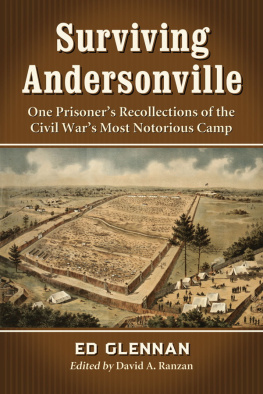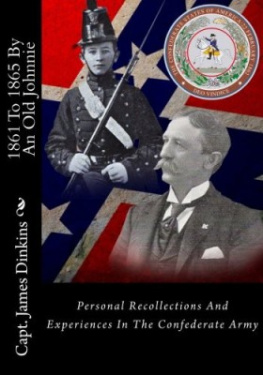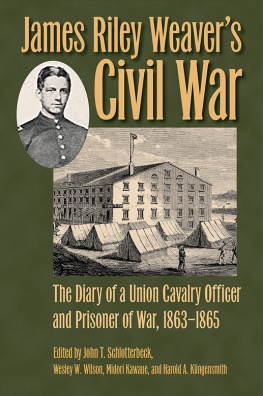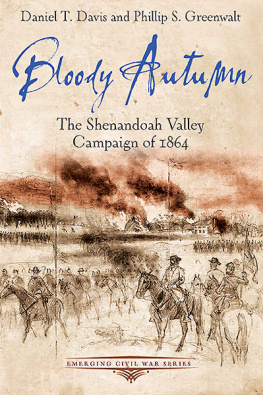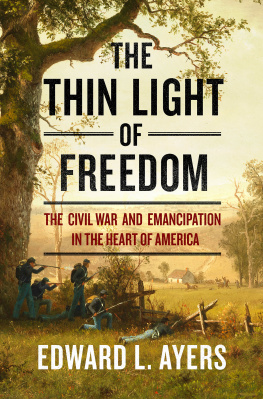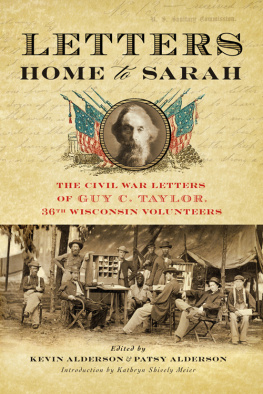
Surviving Andersonville
One Prisoners Recollections of the Civil Wars Most Notorious Camp
Ed Glennan
Edited by David A. Ranzan

McFarland & Company, Inc., Publishers
Jefferson, North Carolina, and London
LIBRARY OF CONGRESS CATALOGUING DATA ARE AVAILABLE
BRITISH LIBRARY CATALOGUING DATA ARE AVAILABLE
e-ISBN: 978-1-4766-0576-0
2013 David A. Ranzan. All rights reserved
No part of this book may be reproduced or transmitted in any form or by any means, electronic or mechanical, including photocopying or recording, or by any information storage and retrieval system, without permission in writing from the publisher.
Cover art: Birds-eye view of Andersonville Prison from the south-east with the vast prison area surrounded by stockade fences and several banks of cannons, by J.W. Morton, Jr., 1890; (LIBRARY OF CONGRESS)
McFarland & Company, Inc., Publishers
Box 611, Jefferson, North Carolina 28640
www.mcfarlandpub.com
Preface
In the summer of 2008, I began my employment as the university archivist at Salisbury University, managing the University Archives and the archives at the Edward H. Nabb Research Center for Delmarva History and Culture. While performing my initial inventory of the Nabb Research Centers archival holdings, I came across the Rose Embry Carey Collection that contained photocopies of a Union soldiers reminiscence. After several days of reading the soldiers prose, I was hooked. His narrative illustrated the hardships typical of prisoners of war but with a personable air that quickly drew me in to his story. Laden with humor, cynicism, honesty, desperation and hatred, I was engaged with his struggle to remain human in a place shrouded in inhumanity and horror.
I decided to do some background research on the author. An Irish immigrant, Edward Glennan enlisted in Company F of the Forty-second Illinois Infantry Regiment in 1861. Rising to the rank of rst sergeant, he participated in the Western Theater of the American Civil War. Wounded twice, he was captured during the battle of Chickamauga and spent the next fourteen months in various prisons in Virginia and Georgia. What made his experiences so special was that he survived Andersonville.
In 1891, while a patient at the Leavenworth National Home, Glennan began to write down his experiences in vivid detail, describing the daily adversity of a Union soldier while a prisoner of war. His journal, comprised of three volumes, bears the hand-lettered title Reminiscence of A Prisoner of War. He lled close to three hundred, closely written pages reminiscing his life from 20 September 1863 to 4 June 1865. The Glennan Reminiscence has been handed down from generation to generation and was in the possession of Ed Glennans grandnephew, Charles Embry. Unfortunately, a family member requested to photocopy the pages and kept the original. He or she instead gave Charles the photocopies. These photocopies were handed down to his daughter (Eds great-grandniece) Rose Embry Carey of Salisbury, Maryland, and she allowed the Edward H. Nabb Research Center for Delmarva History and Culture at Salisbury University to photocopy her photocopied material.
With my experience working for two documentary editing projects, the Papers of the War Department, 17841800, at East Stroudsburg University and the Thomas A. Edison Papers at Rutgers University, I began the task of transcribing Glennans remarkable story and identifying the people he encountered, places he visited and events he observed. The project took a year to complete.
Although Ed Glennan is the focus of the publication, the signicance of his writings goes beyond the man himself. The reader can gain a detailed understanding of the prisons of the South. The depth of the publication makes it of long-term value not only to Civil War enthusiasts but also to a range of scholars and students, including general historians, social scientists, and political scientists. In addition, this books value lies in its ability to enhance other publications for researchers and enthusiasts with never-before-published eyewitness accounts of the key events and places during this period.
A Note on the Editorial Policy
Good or bad, Ed Glennan possesses a unique voice. His stream-of-consciousness writing style paints a vivid picture of his tour of duty during the Civil War. However, his stylistic approach can hinder the reading experience for the audience. As a reader, we are taught punctuation, sentence and paragraph structure and the rules of capitalization. This does not occur in Glennans text, which in turn creates an editorial dilemma. First, how does one meet the criteria of a scholarly documentary edition while still allowing for the fact that a human being wrote the text? Second, how would one make his narrative into a readable manuscript? It is unclear if Glennan was thinking of a possible publication but if he did pursue it, the editor would have been forced to set several rules or emendations to standardize the text for improved readability as the manuscript is littered with numerous eccentricities and idiosyncrasies.
With this in mind, an editorial policy was developed. Other scholarly editions were reviewed and through these examinations, C. Vann Woodwards Mary Chestnuts Civil War closely paralleled the issues in Glennans manuscript. Because of the similarities, the editor adopted that publications editorial policy with a few modications.
The text is transcribed as accurately and literally as possible in the hope of preserving the style of the nineteenth century writing. Because the transcription retains the spelling inconsistencies of the originals, this may cause potential problems for the reader. Where there is any doubt about the interpretation of a particular word that conjectured word is followed by a question mark and enclosed in square brackets. It is the editors intention to literally transcribe what the individual wrote, not to suggest the authors intent. Only in a few cases are words corrected. If the word is confusingly misspelled, so that sense is uncertain, either the missing letter is properly inserted or the corrected word will appear after the misspelling. In both cases, the correction is enclosed in square brackets. Interlineations are brought down to the line of the text at the place indicated as well as addition in the margins. Omitted text is indicated with a dash enclosed in square brackets [] and crossed-out words and phrases are retained when legible with the deleted passage placed in the text with a strike-through bar. Except for regularizing the capitalization, punctuation and in several incidents the spelling, attention has been taken not to alter the authors writing or its content.
Pronunciation was a major concern throughout the narrative. Glennans constant use of dashes of varying length and placement above, amid and below the line level makes it difcult to comprehend his intent. The editor has silently interpreted those dashes as periods when they serve to separate sentences. The writers overuse of commas dees the rules of modern writing. Therefore, the editor has silently imposed some restriction upon Glennans use of commas. If the commas have no place in the text, they were silently removed or changed to the correct punctuation.
While writing down his memories, Glennan was oblivious to demarcating paragraphs, therefore the editor has inserted paragraph breaks where he thought appropriate. The editor imposed a modern form of capitalization in those cases where the rst word in the new paragraph was lowercased. The editor also exercises rules of capitalization consistent with intelligibility. Unintentional repetitions are silently corrected, whereas obvious slips of the pen were ignored. All names of ships have been italicized. Explanatory insertions by the editor to indicate, for example, a missing or torn page are similarly bracketed and italicized. All ellipses are the editors and are not placed in brackets.
Next page
